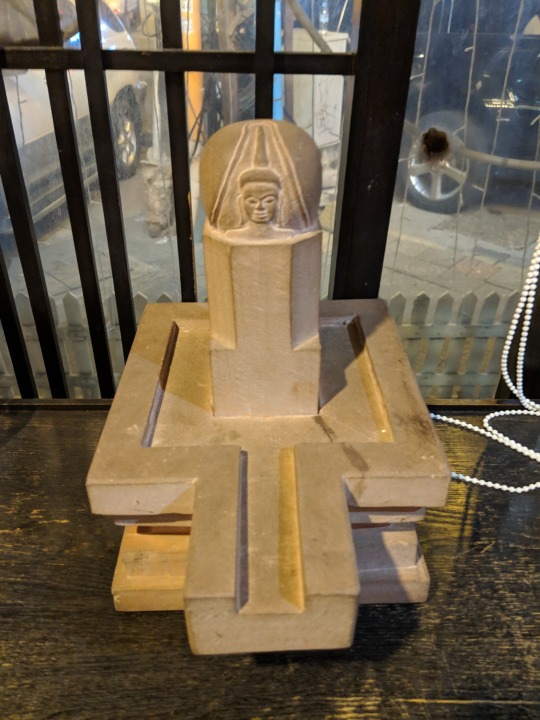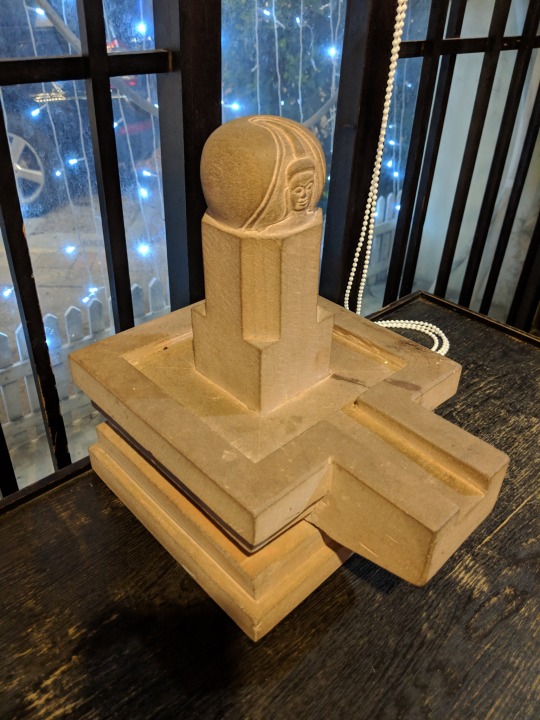#Śiva-liñga
Explore tagged Tumblr posts
Photo





Ekamukhaliñga – One-faced Liñga
Chloritic schist, Eastern India, Bihar
Pala Era late 7th or early 8th Century CE
The sanctum sanctorum or garbha-gṛha of a Hindu temple dedicated to Lord Śiva Mahādeva would have installed the Śiva-Liñga. The Śiva-Liñga is sometimes encased in a metallic mask that is crafted in the image of Lord Śiva’s face, in early medieval India, the Liñga itself sometimes had a stone face (mukha) sculpted on to it thereby becoming a mukhaliñga. The Liñga could have a single or at times four faces sculpted on to it.
Cleveland Museum of Art
#Ekamukhaliñga#mukhaliñga#Śiva-Liñga#Shivalinga#Mukhalinga#Lord Śiva Mahādeva#Lord Shiva#Shiva#Shaivism#Hinduism#Hindu Art#Pala Era
297 notes
·
View notes
Text


Mukhaliñga
The traditional aniconic representation of Lord Śiva in form of the Liñga – this representation is unusual in that the octagonal and cuboid bases of the Liñga are depicted over the Yoni patala or base.
Contemporary stonework, Thailand
43 notes
·
View notes
Photo

Mukha Liñga
Mukha-Liñgas, or Śiva-Liñgas with a face representing Lord Śiva; possibly a later variant of Liñgodbhava forms. Often used as decorative encasing for a stone Śiva-liñga on festive occasions.
Silver, probably western India, 19th Century
American Natural History Museum
14 notes
·
View notes
Photo

Mukhaliñga Mūrtī
Silver aniconic (liñga) representation of Lord Śiva, depicted with a face (mukha), often used for ritual worship on special occasions in Śiva Temples.
Śrī Kuṇakeśwara Temple, Devgaḍ, Mahārāśtra
#Mukhaliñga Mūrtī#Mukhaliñga#Mukhalinga#Shivalinga#Lord Śiva#Shiva#Mahadeva#Hinduism#Hindu Temple#Shaivism
34 notes
·
View notes
Photo

Lord Śiva Liñgodbhava Mūrtī
Aniconic image of Lord Śiva depicting the legend of the emergence of the Liñga.
Contemporary stonework, Mamallapuram
15 notes
·
View notes
Photo


Śrī Kāśi Viṣveśwara
The Śiva-liñga in the garbhagṛh of the Viṣvanātha Temple, probably the holiest shrine in Hinduism.
10 notes
·
View notes
Photo





Śri Liñgeśwara Temple
A small temple dedicated to Lord Śiva as Liñgeśwara from near the town of Miṭbāv in the coastal region of Maharashtra. The construction is very typical to coastal Maharashtra with a clay-brick structure and maṇḍapa with tiled roofing.
The Śiva-liñga inside the sanctum sanctorum is believed to be naturally self-formed, swayambhū. The yonī-paṭa leading out to the Gaumukha is seen in most Śiva temples in these parts, as is the dīpa – tripura or column for lamps and tulaśī-vṛndāvana facing the temple. The painted clay image of a lion next to the tulaśī-vṛndāvana is unusual – probably hearkening back to a past when the area was covered in monsoonal growth and the Asiatic lion has a much wider range spread across the sub-continent.
90 notes
·
View notes